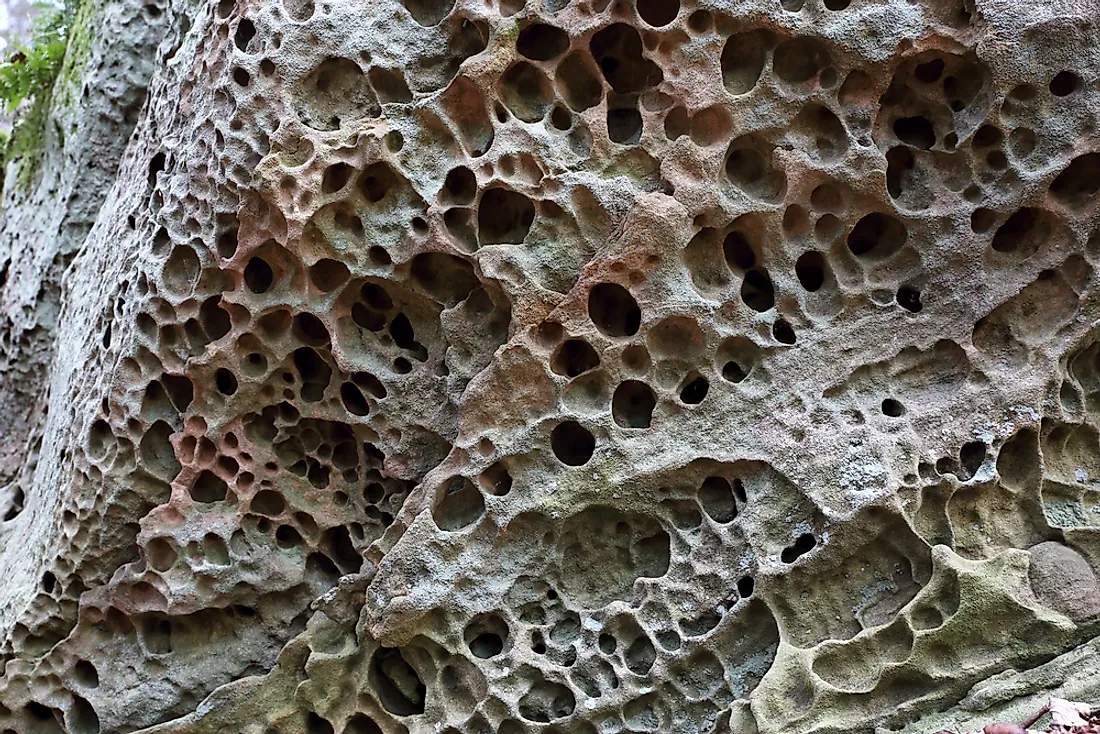What Is Haloclasty?

Haloclasty is a process in which the growth of salt crystals causes physical weathering. Different from erosion, physical weathering is a type of mechanical weathering that refers to the breakdown of rocks, minerals, and soils due to contact with biological organisms, water, or the atmosphere. Studies show that the types of salt that are most effective at physical weathering are calcium chloride, magnesium sulfate, and sodium sulfate.
Haloclasty Process
The haloclasty process begins when saline water seeps into cracks between rocks. When the rocks are heated, the water evaporates, leaving behind salt crystals. As temperatures increase further, the salt crystals expand, which puts pressure on the rocks. If the process continues for an extended period of time, the rocks will eventually shatter into smaller fragments.
Haloclasty can also occur through chemical reactions. When freshwater (rather than saline) seeps into rock crevices, it can dissolve substances such as chalk and limestone, which mix with the water to form solutions of sodium carbonate or sodium sulfate. When temperatures increase and the water evaporates, the remaining salt crystals can eventually cause parts of the rock to crumble. Since temperature is an important factor in haloclasty, it is not surprising that the process tends to occur primarily in arid locations, as well as in coastal regions.
Advantages and Disadvantages of Haloclasty
One key benefit of haloclasty, and weathering in general, is the formation of soil, which is crucial for the growth of plants. Without the process, many parts of the Earth would be an uninhabitable pile of rocks.
However, haloclasty also has a number of disadvantages. For example, if the process occurs in coastal areas, it can damage shores and shorelines. Additionally, nearby settlements can be affected by a potential natural disaster in the form of mass wasting, such as rockfalls, mudflows or mudslides, and rockslides. Nearby farms also suffer because smaller rock particles are susceptible to erosion through wind or water.











